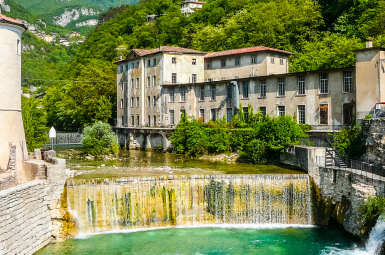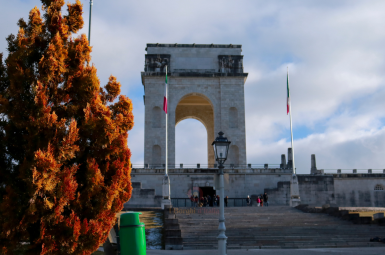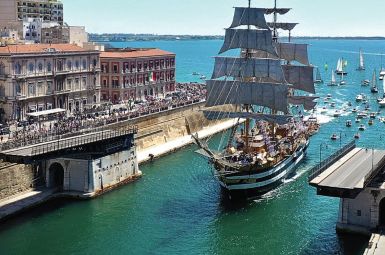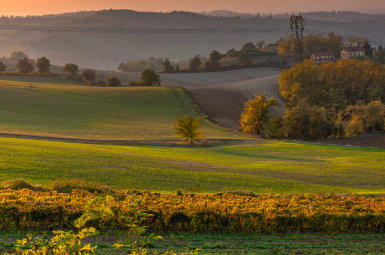
Il Borgo di Ravello
Ravello: La Terrazza Sull’Infinito della Costiera Amalfitana
Sospesa tra il blu del cielo e l’azzurro del mare a 350 metri di altezza, Ravello è un’esperienza sensoriale prima che una destinazione. Non è un borgo di mare come gli altri della Costiera Amalfitana, ma un balcone panoramico, un nido di rondini che ha stregato artisti, compositori e intellettuali di ogni epoca, da Boccaccio a Wagner. È qui che il lusso si fonde con la storia, dando vita a un luogo che è patrimonio mondiale UNESCO e vera e propria capitale culturale della Campania.Il Magnifico Ingresso all’Eternità
Ravello è la culla di due delle ville storiche più celebrate al mondo, luoghi dove l’architettura dialoga in modo sublime con il paesaggio.- Villa Rufolo: Musica e Leggenda. Affacciata sulla piazza principale, questa villa del XIII secolo è un trionfo di stili, dal moresco al normanno. I suoi giardini terrazzati a strapiombo, con i loro colori esplosivi, ispirarono a Richard Wagner l’ambientazione magica del giardino incantato di Klingsor nel suo Parsifal, guadagnando a Ravello l’appellativo di “Città della Musica”.
- Villa Cimbrone: La Terrazza dell’Infinito. Raggiungibile attraverso il Viale dell’Immenso, questa villa custodisce il punto panoramico più famoso al mondo: la Terrazza dell’Infinito. Una fila di busti marmorei si staglia contro il cielo, offrendo una vista mozzafiato sul Golfo di Salerno, descritta dal viaggiatore Gregorovius come “il più bel panorama del mondo”.
Storia Nobile e Spirito Culturale
Fondata nel VI secolo e prosperata grazie a un gruppo di nobili ribellatisi ad Amalfi, Ravello fu un’antica potenza marittima e commerciale.- Il Duomo e l’Arte: Al centro della vita cittadina si trova il Duomo, fondato nel 1086, che custodisce tesori come il magnifico Pulpito in marmo, capolavoro del XII secolo decorato con due splendidi mosaici raffiguranti Giona inghiottito e poi sputato fuori dalla balena.
- La Sede della Cultura: Oggi Ravello non vive solo di storia, ma è un centro culturale vivace, sede del prestigioso Ravello Festival (il festival di musica e arte che si tiene prevalentemente nei giardini di Villa Rufolo) e del Centro Universitario Europeo per i Beni Culturali.
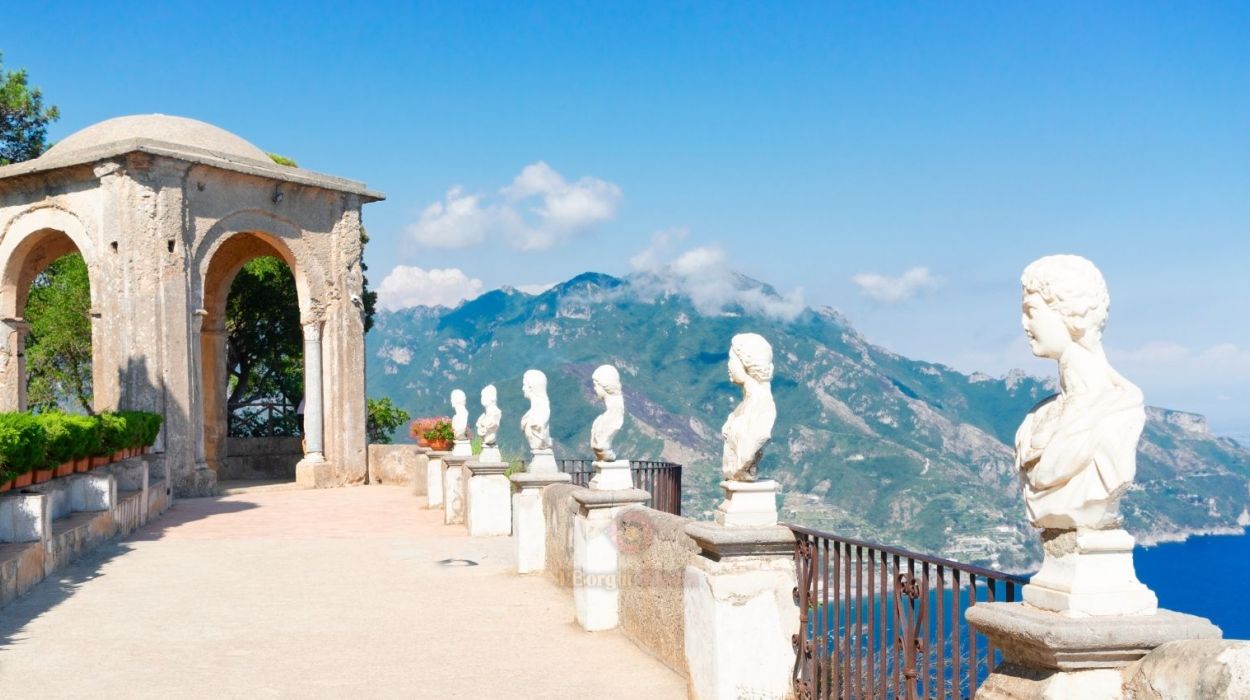
Il Borgo d’Italia
tutto da scoprire ed esplorare
Monumenti
Ravello: Dove l’Architettura Incontra l’Infinito
Ravello non è solo una città, è una pinacoteca a cielo aperto, un palcoscenico monumentale sospeso a 350 metri sul mare. Ogni pietra, ogni arco, ogni giardino in questo borgo UNESCO narra la storia di un’opulenza medievale e di un fascino irresistibile che ha sedotto i grandi spiriti del mondo. I monumenti di Ravello non sono semplici costruzioni; sono punti di osservazione sull’eternità, capolavori che legano la terra al cielo.
I Capolavori che Hanno Plasmato la Leggenda
La fama di Ravello si regge su due ville storiche di ineguagliabile bellezza e influenza culturale.
1. Villa Rufolo: Il Giardino Magico di Wagner
Proprio sulla piazza principale, Villa Rufolo è il cuore pulsante di Ravello e la sua storia. Costruita nel XIII secolo dalla potente famiglia Rufolo, questa dimora è un trionfo di stili che spaziano dal Moresco al Normanno, un simbolo della ricchezza marittima della Costiera.
- Il Richiamo della Musica: I suoi giardini a più livelli, con la loro esplosione di colori e la vista mozzafiato, ispirarono a Richard Wagner l’ambientazione del Giardino Incantato di Klingsor nel suo Parsifal. Per questo, Villa Rufolo è ancora oggi il magnifico scenario del celebre Ravello Festival.
- Architettura e Atmosfera: Non perdete il Chiostro Moresco e la slanciata Torre Maggiore, che domina il paesaggio, testimoniando un passato di grandezza.
2. Villa Cimbrone: La Terrazza dell’Assoluto
Raggiungibile attraverso un viale alberato suggestivo (Viale dell’Immenso), Villa Cimbrone è l’apice emozionale di Ravello.
- La Terrazza dell’Infinito: Questo è senza dubbio il belvedere più famoso al mondo. Una sfilata di busti marmorei si affaccia su uno strapiombo drammatico, offrendo una vista che abbraccia l’intero Golfo di Salerno, dalla Costiera fino alla piana del Sele. Uno spettacolo che lo scrittore Gore Vidal definì come il più bello mai visto.
- I Giardini Romantici: Il parco, ristrutturato in chiave romantica dall’inglese Ernest William Beckett, è un labirinto di fontane, statue e templi nascosti, che invitano alla meditazione e alla scoperta.
Le Radici Sacre e la Storia Civica
Il fascino di Ravello è cementato anche dalle sue architetture religiose e pubbliche, testimonianze del suo passato di sede vescovile.
3. Il Duomo di Ravello (Basilica di Santa Maria Assunta)
Fondata nel 1086, questa ex cattedrale è un tesoro di arte medievale e un punto focale per la comunità.
- Il Capolavoro del Bronzo: Ammirate il magnifico Portale di Bronzo, fuso a Costantinopoli nel 1179, un’opera d’arte bizantina di inestimabile valore.
- L’Ambóne di Nicola Rufolo: All’interno, il pulpito (o Ambóne) è un capolavoro assoluto, realizzato nel XII secolo in marmo bianco e arricchito da mosaici a fondo oro che narrano la storia di Giona e la Balena, interamente finanziato dal ricco patrizio Nicola Rufolo.
- Il Sangue di San Pantaleone: Il Duomo è anche il custode della fiala che contiene il sangue del patrono, San Pantaleone, protagonista di un annuale miracolo di liquefazione.
4. Il Belvedere della Principessa di Piemonte
Situato vicino a Piazza Duomo, questo giardino panoramico è meno celebre delle ville, ma ugualmente prezioso. Offre un affaccio incantevole e una prospettiva diversa sul mare e sulla piccola frazione di Torello. Il suo nome omaggia la figura di Maria José di Savoia, Principessa di Piemonte.
I monumenti di Ravello sono un invito a salire: non solo in altitudine, ma nella storia, nell’arte e in una dimensione di bellezza che, qui, sembra non avere confini. Quale di questi simboli vorreste esplorare per primo?
Curiosità
Ravello: I Segreti della “Città della Musica” e della Storia
Ravello non è solo una meta turistica; è un concentrato di storia, arte e leggende, sospeso tra il cielo e il mare della Costiera Amalfitana. Soprannominata la “Città della Musica”, la sua eleganza discreta nasconde un passato di grande potere e vicende sorprendenti.
Ecco le curiosità più affascinanti che rendono Ravello un luogo unico al mondo, scritte con l’autorità di chi ne conosce ogni angolo.
1. Il Giardino Magico che Ispirò Wagner
La celebrità mondiale di Ravello è legata indissolubilmente a Richard Wagner.
- L’Estasi di Klingsor: Nel 1880, il grande compositore tedesco visitò Villa Rufolo. Alla vista dei suoi giardini fioriti e delle rovine moresche, ebbe una folgorazione. Esclamò: “Die Klingsor Zaubergarten ist gefunden!” (Il Giardino Magico di Klingsor è trovato!).
- Nascita di un Capolavoro: In quel momento, Wagner trovò l’ispirazione definitiva per l’ambientazione del secondo atto della sua ultima opera, il “Parsifal”. Questo evento segnò la nascita del Ravello Festival, un’appuntamento di musica classica che, in estate, si tiene ancora oggi su un palco a sbalzo sul mare, proprio nei giardini di Villa Rufolo.
2. La Rivolta che Le Diede il Nome (Rebello)
Il nome Ravello deriva da un atto di vera e propria ribellione storica.
- I Patrizi Ribelli: Ravello fu fondata intorno al VI secolo d.C. ma conobbe il suo massimo splendore intorno all’Anno Mille, quando fu popolata da un gruppo di nobili amalfitani che si ribellarono all’autorità del Doge della Repubblica Marinara di Amalfi.
- La Fortezza Anti-Amalfi: Questi aristocratici scelsero l’altura di Ravello (ben difendibile) per stabilire la loro nuova, opulenta dimora, contrapponendosi alla politica di Amalfi. Fu proprio la loro natura di ribelli a far sì che gli Amalfitani chiamassero la località “Rebello”, termine da cui è derivato l’attuale Ravello.
3. Il Miracolo del Sangue che si Liquefa
Ravello custodisce un fenomeno religioso che richiama da vicino il ben più famoso Miracolo di San Gennaro a Napoli.
- San Pantaleone: Il patrono di Ravello è San Pantaleone, un medico martirizzato nel IV secolo. Nel Duomo, all’interno della Cappella a lui dedicata, è conservata una fiala con la sua reliquia: una parte del suo sangue.
- L’Evento Annuale: Ogni anno, in occasione della ricorrenza del martirio (il 27 luglio), la fiala viene esposta e, con grande devozione popolare, il sangue si liquefa. Questo evento è un segno di perenne protezione per la città e i suoi abitanti.
4. Un Pezzo di Storia d’Italia a Villa Cimbrone
Villa Cimbrone e la sua celebre Terrazza dell’Infinito non sono solo un capolavoro paesaggistico, ma anche il luogo di un passaggio storico cruciale.
- La Tappa della Transizione: Durante la Seconda Guerra Mondiale, quando il Governo provvisorio d’Italia era insediato a Salerno, Villa Cimbrone divenne un punto strategico.
- L’Atto Decisivo del ’44: Fu in una sua dependance che, il 12 aprile 1944, venne firmato l’atto di Luogotenenza da parte di Re Vittorio Emanuele III in favore del figlio Umberto II, passaggio fondamentale che traghettò l’Italia verso la Repubblica.
Queste curiosità dimostrano come Ravello sia un crocevia in cui il mito, l’arte e la storia si incontrano, offrendo molto più di un semplice panorama.
Personaggi
Ravello: I Padri Fondatori e le Dinastie che Diedero Vita alla Città della Musica
Ravello è nota universalmente come il rifugio di geni, il luogo che ispirò Wagner e fu casa (temporanea) di scrittori come Gore Vidal. Tuttavia, la sua grandezza fu plasmata secoli fa da illustri cittadini che, pur essendo meno conosciuti della lunga lista di visitatori famosi, sono i veri pilastri della sua architettura e del suo splendore. Ravello non ha celebrità moderne nate tra le sue mura, ma le sue radici affondano nei fasti delle famiglie che la resero potente nel Medioevo.
1. Nicola Rufolo: Il Mecenate del Duecento
Il nome di Ravello è indissolubilmente legato a Villa Rufolo, capolavoro architettonico che oggi ospita l’omonimo festival. La figura che diede origine a gran parte di questo splendore fu un membro della potente famiglia Rufolo.
- Il Patrizio e il Banchiere: Nicola Rufolo fu uno dei patrizi più ricchi e influenti di Ravello nel XIII secolo, un’epoca d’oro per la città. La sua ricchezza non derivava solo dal commercio, ma anche dai prestiti che elargiva alla Curia Regia nel Regno di Sicilia.
- L’Architetto del Simbolo: A lui si deve la riedificazione di Villa Rufolo in uno sfarzoso stile islamico-normanno, trasformandola nella dimora principesca che oggi ammiriamo. Inoltre, Nicola Rufolo finanziò e fece realizzare il magnifico Ambóne (pulpito) del Duomo di Ravello, una delle opere d’arte più preziose e simboliche della città.
Sebbene la sua famiglia cadde in disgrazia in seguito agli intrighi di potere del Regno, l’eredità artistica e architettonica di Nicola Rufolo è, letteralmente, il cuore di Ravello.
2. Landolfo Rufolo: L’Impronta nella Letteratura Universale
Un altro membro della dinastia Rufolo ottenne una fama che trascendeva le mura del borgo, grazie a una penna immortale.
- Il Mercante di Boccaccio: Sebbene i dettagli biografici siano scarsi, il nome di Landolfo Rufolo è stato eternato da Giovanni Boccaccio che lo scelse come protagonista della novella IV della Seconda Giornata del suo capolavoro, il Decameron.
- Una Storia di Fortuna: Boccaccio narra di Landolfo, un ricchissimo mercante di Ravello che, dopo aver investito tutti i suoi beni in affari andati male, si diede alla pirateria. Dopo un naufragio rocambolesco, ritornò a casa arricchito da un piccolo tesoro. Questa storia non solo contribuì alla fama della famiglia, ma legò Ravello in modo indissolubile alla grande letteratura italiana.
3. La Famiglia Confalone: Nobiltà e Lusso Antico
Ravello fu caratterizzata da diverse famiglie nobili che con i loro palazzi e conventi ne definirono l’aspetto attuale. Tra queste, spicca la casata che diede il nome a uno dei complessi più antichi del borgo.
- I Padroni del Palazzo: I Confalone furono un’antica famiglia patrizia di Ravello. Il loro omonimo palazzo, Palazzo Confalone, oggi trasformato in un hotel di lusso, risale al XIII secolo e rappresenta una delle dimore aristocratiche meglio conservate, circondata da giardini che richiamano lo splendore di Villa Rufolo.
- Mecenatismo Silenzioso: Sebbene non ci sia un singolo Pantaleone Confalone celebre come un filosofo o un artista, la famiglia nel suo insieme contribuì a sostenere la ricchezza edilizia e l’assetto urbano di Ravello, lasciando un segno tangibile nel patrimonio architettonico cittadino.
Questi personaggi, con la loro influenza economica e il loro gusto artistico, sono i veri nativi che hanno creato la cornice ineguagliabile in cui, secoli dopo, artisti e intellettuali si sarebbero rifugiati per trovare la loro “Terrazza sull’Infinito”.
Ricette Tipiche
L’Eccellenza in Tavola: I Sapori di Ravello, Tra Terra e Infinito
Ravello non è solo una meraviglia per gli occhi, è una sinfonia per il palato. La sua posizione unica, a cavallo tra la verticalità dei Monti Lattari e l’orizzonte marino, modella una cucina che è un equilibrio perfetto tra i sapori robusti della terra e la freschezza impareggiabile del mare.
Qui, ogni piatto è un’ode al Limone Sfusato Amalfitano IGP, vero oro giallo di Ravello, ingrediente che eleva la tradizione a pura arte. Preparatevi a scoprire le ricette che definiscono l’identità gastronomica di questo borgo divino.
I Primi: Il Trionfo della Pasta Fatta a Mano
La cucina di Ravello onora la tradizione campana, ma la arricchisce con prodotti unici e ricette esclusive.
1. Gli Scialatielli ai Frutti di Mare (con Tocco di Limone)
Gli Scialatielli sono il formato di pasta fresca simbolo della Costiera. Più corti e spessi delle fettuccine, sono fatti a mano, spesso con l’aggiunta di latte e basilico nell’impasto. A Ravello li troverete conditi nel modo più sontuoso: con un abbondante ragù di frutti di mare freschissimi – cozze, vongole, calamari e gamberi – esaltati da pomodorini del piennolo e, immancabilmente, da una grattugiata energica e profumatissima di scorza di limone sfusato. È l’incontro perfetto tra la montagna e il mare.
2. Gli ‘Ndunderi
Questi gnocchetti di forma irregolare sono considerati dall’UNESCO una delle paste più antiche del mondo, e la loro ricetta è tipica delle zone interne dell’Amalfitana, come Ravello e la sua frazione Pogerola. Gli ‘Ndunderi sono preparati con ricotta fresca locale (invece delle patate), uova e formaggio, e vengono tipicamente serviti con un semplice ma ricco sugo al filetto di pomodoro e basilico, per esaltare la purezza della ricotta. Un piatto rustico che racconta secoli di storia contadina.
Il Dolce Iconico: La Leggenda del “Sole”
Se Ravello è la città della musica, il suo dessert è il suo acuto più celebre: una creazione che unisce innovazione e tradizione agrumicola.
3. Il “Sole nel Piatto” di Ravello
Non si può lasciare Ravello senza aver assaggiato il dolce che ha fatto la storia della gastronomia locale. Nato nel leggendario ristorante La Caravella, il “Sole nel Piatto” (chiamato anche Soufflé di Limone) è il vero dolce simbolo di Ravello. Si tratta di un soffice e impalpabile soufflé o un tortino a base di Limone Sfusato Amalfitano, servito caldo e con un cuore cremoso che rilascia in bocca l’aroma e la dolcezza del frutto, bilanciata dalla sua acidità. Un capolavoro di pasticceria che racchiude tutta la luce e il calore della Costiera.
Il Liquore Essenziale: Il Digestivo della Divina
Dopo una cena a strapiombo sul blu, il rito si conclude con un elisir digestivo, il vero spirito della costiera.
4. Il Limoncello
Anche se celebre in tutta la Campania, il Limoncello di Ravello si distingue per l’utilizzo esclusivo del Limone Costa d’Amalfi IGP, la cui scorza spessa e ricchissima di oli essenziali conferisce al liquore un profumo e un sapore ineguagliabili. È il digestivo perfetto: gelido, vibrante e intensamente aromatico, un concentrato di sole liquido che saluta la vostra esperienza gastronomica.
Questi sono i sapori autentici di Ravello: una cucina che bilancia terra e mare con un tocco d’oro giallo, trasformando l’atto di mangiare in un momento di puro lusso sensoriale. Quale di queste eccellenze vorreste assaggiare per prima, con vista sull’Infinito?
